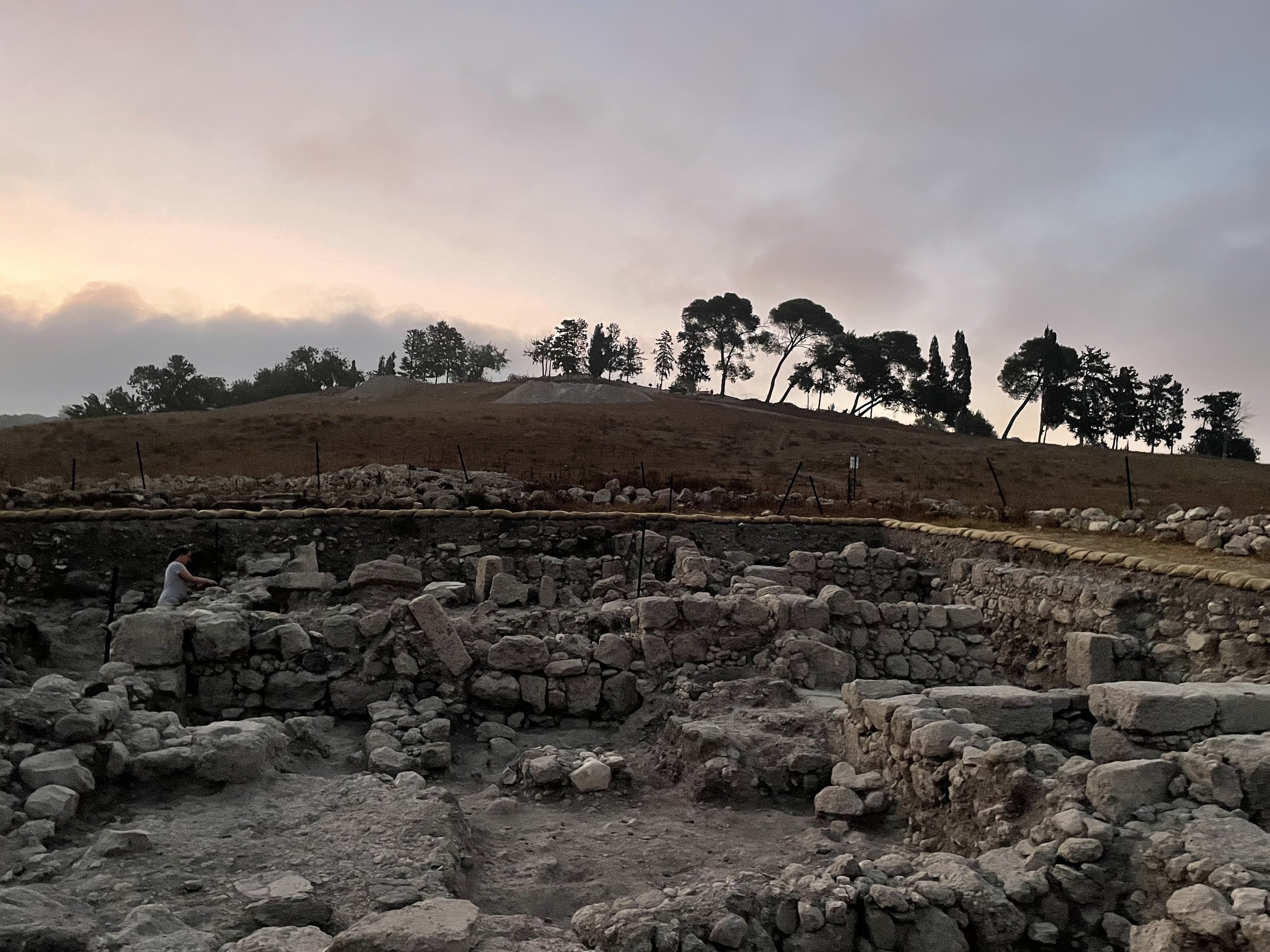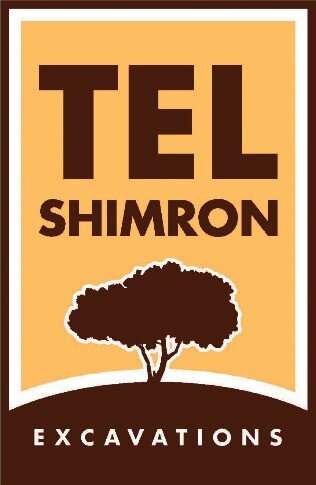
Hellenistic Period Research Questions
By Kathleen J. Birney
Very little is known about Tel Shimron itself in the Hellenistic period. Portugali’s (1982) survey showed no clear evidence of occupation on the excavation site, although Feig’s (2009) salvage work at the base of the tel revealed Hellenistic fills underneath a Roman road connecting Legio with Sepphoris, together with a single Ptolemaic coin struck at an Ashkelon mint. Collectively these point towards the presence of a more significant occupation, and perhaps even at a role for Shimron in overseeing the Ptolemaic and Seleucid royal estates in the 3rd and 2nd centuries. Josephus asserts that Alexander Jannaeus controlled Mt. Tabor, Scythopolis and Gadara, which suggests that by the end of the 2nd century we can safely speak of Hasmonean control of the broader Jezreel valley (Jewish Wars 1.66) The presence of coins of Jannaeus and a fort at nearby Sepphoris by the turn of the 1st century B.C. suggest that Shimron was likewise solidly under Hasmonean control by this point (Meyers and Meyers 2009). The nature, size, status and commercial relations of Tel Shimron during the Hellenistic period will shed light on broader regional questions of political organization, cultural influence and, by the late 2nd century, religious expression.
Royal Agriculture, Redux: The Hefzibah inscription and Zeno papyri (Landau 1966) present a picture of the Jezreel as a region of agricultural estates during the Ptolemaic and Seleucid periods. Antiochus III’s ability to gift the region[1] as a hereditary land grant (one which encompassed both the agricultural fields and the villages of those who worked this land) suggests a certain degree of territorial continuity despite changes in ownership. Here the botanical study proposed for the Persian period can be expanded to create a comparative picture of agricultural practices and land management between the Achaemenids, Ptolemies and Seleucids. In particular the presence and relative quantity of triticum aestivum, which has been suggested as a candidate for the ‘Syrian wheat’ described in Ptolemaic texts, and which has been attested in Ptolemaic storerooms at Kedesh (Berlin et al. 2003), would be an important data point by which to identify shifting policies of cultivation in relation to shifting political oversight, and to map the broader agricultural landscapes overseen by each empire.
Coastal Connections (3rd/2nd centuries B.C.): The Hellenistic period in Israel is characterized by cultural boundaries, divisions which in 3rd and 2nd centuries are marked by differing degrees of coastal access and Phoenician influence. The latter appears to have had a more substantial impact on material culture than the nominal political control of the Ptolemies or Seleucids (cf. Berlin 1997a & b). Although the Jezreel Valley appears to have remained a largely agricultural region in the 3rd and 2nd centuries, its economic complexion nonetheless changed throughout the Hellenistic period, particularly by the mid-2nd century B.C. Wealthy settlements began to emerge along the edges of the valley, at sites such as Jezreel on the valley’s eastern end, whose inhabitants drank Aegean wines and dined from Phoenician semifine and Eastern sigilatta tablewares (Ariel 2014). The Jezreel assemblage is an echo of the luxury assemblages seen in developed urban centers, and marks the evolution of highly commercialized (and perhaps Phoenician controlled or mediated) networks in the Jezreel valley along east-west routes connecting the Acco plain with Beth Shean/Scythopolis. It is unclear whether the routes leading into the Lower Galilee were equally robust at this time, however. The profile of imported goods at Tel Shimron, given its liminal position astride this major route into the Galilee, will be an important indicator not only of Tel Shimron’s commercial connections but also of the active routes in the Jezreel both before and after the Hasmonean conquest.
Hasmonean Expansion and Judaization (late 2nd – 1st century B.C): Leibner among others (2009a) has demonstrated an increase in settlement in the Galilee in the wake of Hasmonean control. At many of these sites in the Lower Galilee Berlin (2005, 2014) has documented evidence for what she terms “household Judaism”, a combination of material traits that mark a projection of Jewish identity. Aegean imports (such as wine or unguents) and the imported tablewares which figure prominently in coastal and inland cities such as Scythopolis and Acco are absent at these sites, likewise cooking and coarsewares produced at Phoenician centers and at Acco are similarly passed over in favor of locally-produced vessels in a limited range of shapes. At a number of sites these ceramic choices appear in conjunction with mikva’ot, a pairing which supports Berlin’s suggestion that the lacunae in the ceramic assemblages do not reflect commercial change in the first century, but rather mark a deliberate rejection of cosmopolitan Hellenizing behaviors and projection instead of a Jewish identity. These twin changes are attested at numerous sites in the Galilee, both rural and urban, newly settled and established (Berlin 2005, 2014). Our work will reveal whether Shimron – like nearby Sepphoris - reflects these first century shifts, or whether it conformed to the more cosmopolitan profile of cities such as Jezreel or the coastal cities to which it may have been politically and commercially tied in the earlier decades of the 2nd century B.C.
Pottery Production centers: Petrographic analysis of the site’s coarse and cooking wares will help to identify the production centers from which the city’s inhabitants procured their pottery throughout the Hellenistic period. This will not only illuminate the site’s local networks but will serve as an important base of comparison for questions central to the transitional Late-Hellenistic/Early Roman periods. Berlin has suggested that Jewish communities from Jerusalem to the Golan were purchasing pottery from as few as four major production centers founded in the mid-1st century B.C., of which Kfar Hananya was the primary production center for Jewish settlements in the Galilee and nearby (2005:422). Recent work on pottery from Early Roman Yodefat has noted the presence of wasters of Kfar Hananya cooking pots – in fabric that appears to differ both from the Kfar Hananya center and that of the basaltic fabrics produced in Gaulanitis (Aviam 2011). Such observations call into question the exclusivity of these production centers and underscores the need for comprehensive petrographic study so that regional trends in production throughout the 1st century can be more accurately assessed.
[1] contra Udoh (2002) who argues that the text refers to the Plain of Sharon, rather than Esdraelon.
Bibliography
Ariel, D. 2014. “The Stamped Amphora Handles from Tel Jezreel.” PEQ 146.2: 135–48.
Aviam, Mordechai. 2004. Jews, Pagans and Christians in the Galilee. Vol. 1 of Land of Galilee. Rochester: University of Rochester Press.
Berlin, A. 1997a. “From Monarchy to Markets: The Phoenicians in Hellensitic Palestine.” BASOR 306: 75–88.
______ 1997b. “Archaeological Sources for the History of Palestine: Between Large Forces: Palestine in the Hellenistic Period.” Biblical Archaeologist 60.1: 2–51.
______ 2005. “Jewish Life before the Revolt: The Archaeological Evidence.” Journal for the Study of Judaism 36.4: 417–70.
______ 2014. “Household Judaism.” In Galilee in the Late Second Temple and Mishnaic Periods: Life, Culture, and Society, Volume 1, edited by David A. Fiensy and James Riley Strange, 208–15. Minneapolis: Fortress Press.
Berlin, A., et al. 2003. "Ptolemaic Agriculture, “Syrian Wheat”, and Triticum aestivum." Journal of Archaeological Science. 30 (1): 115–21.
Feig, N. 2009. "Tel Shimron" Hadashot Arkheologiyot – Excavations and Surveys in Israel. 121.
Landau, Y.H. 1966. A Greek Inscription found near Hefzibah. Israel Exploration Journal 16.1: 54–70.
Leibner, Uzi. 2009a. Settlement and History in Hellenistic, Roman, and Byzantine Galilee: An Archaeological Survey of the Eastern Galilee. In Texts and Studies in Ancient Judaism, Vol. 127. Tübingen: Mohr Siebeck.
Meyers, C.L. and E.M. Meyers. 2009. “The Persian Period at Sepphoris.” Eretz Israel 29: 136–44*.
Portugali, Yuval. 1982. “A Field Methodology for Regional Archaeology (The Jezreel Valley Survey, 1981).” Tel Aviv 9/2: 170–88.
Udoh, F.E. 2002. “Jewish Antiquities XIV: 205, 207–208 and “the Great Plain”.” PEQ 134: 130–43.
